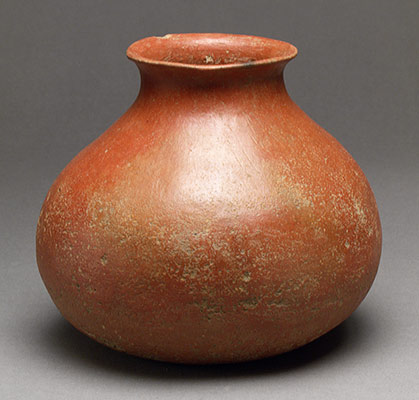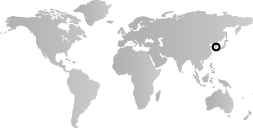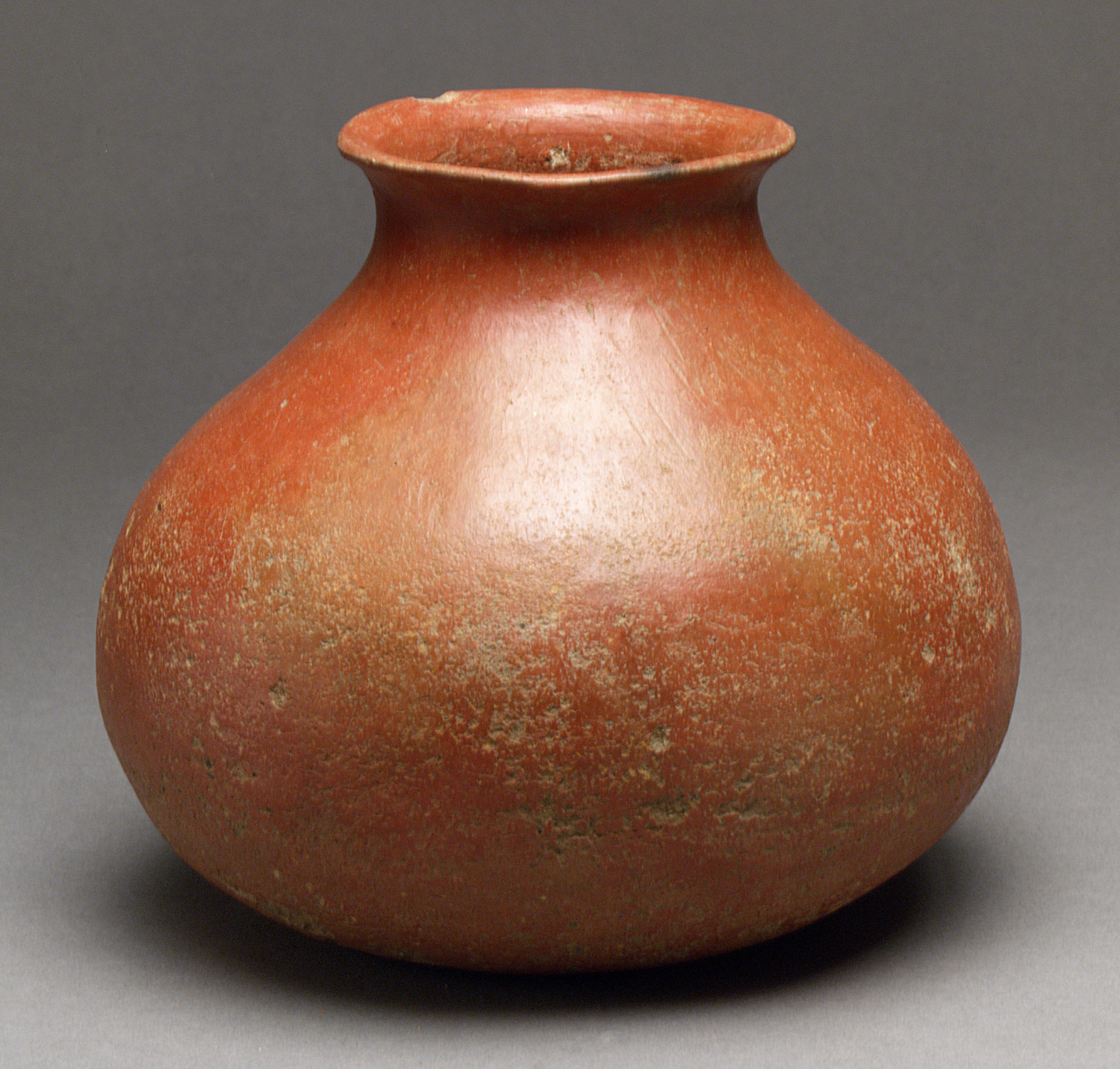During the first millennium B.C., bronze technology and then iron technology are introduced into the Korean peninsula, probably from the northern regions of the continental mainland, and are used to produce both utilitarian and ritual implements. Advances in metallurgy and a dependence on agriculture spur the development of a more complex social hierarchy, which is attested by increasingly elaborate burial practices. The migration of different populations into the peninsula from neighboring regions in Manchuria and Siberia during the Bronze Age also leads to regional variations in the material, form, and function of ceramic wares, including the appearance of painted wares. Ceramics of the Iron Age take even more diverse forms with the introduction of the potter’s wheel.
The first wall-towned states are formed on the peninsula during this period. The oldest and most advanced is Old Joseon, situated in the basins of the Liao and Daedong rivers, just southeast of present-day Manchuria. At the end of the second century B.C., China’s Han dynasty (206 B.C.–220 A.D.), after conquering Wiman Joseon (the successor state to Old Joseon), establishes the first Chinese military commandaries on the Korean peninsula. The largest of these, Nangnang (Lelang), in the northwest, will for the next 400 years remain a Chinese colonial bastion and have manifold cultural and political effects on the native population. In the first century B.C., powerful Korean tribal clans begin to coalesce in what will eventually become centralized states.


